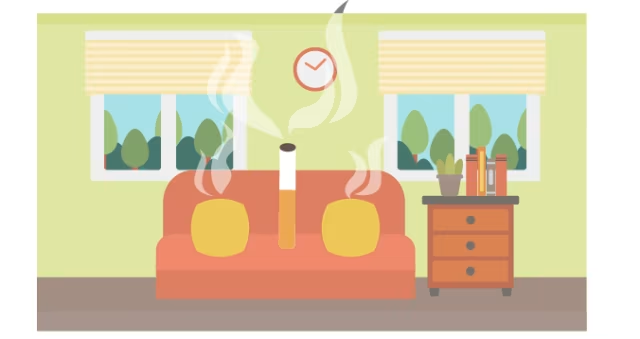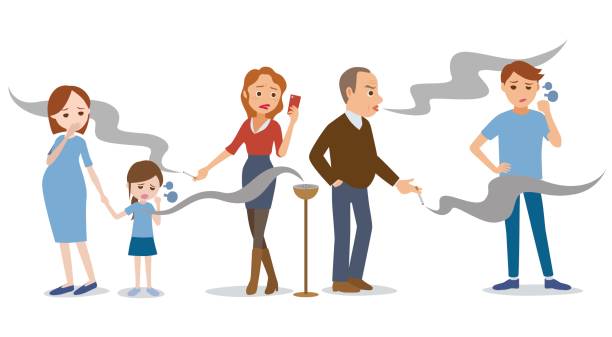Have you ever walked into a room, only to be greeted by the faint but unmistakable smell of cigarette smoke, even though there isn’t a smoker in sight? You’re not alone. This phenomenon is known as “third hand smoke,” a relatively new concept that poses a potential health risk to both smokers and non-smokers alike. In this article, we’ll dive deep into the world of third hand smoking, what it is, how it affects you, and why you should be concerned.
What Is Third Hand Smoke?

To grasp the concept of third hand smoke, we first need to understand its predecessors: first hand smoke and second hand smoke. First hand smoke is what you inhale when you smoke a cigarette yourself, exposing your body to a host of harmful chemicals found in tobacco. Second hand smoke occurs when you’re near a smoker, and you unwittingly inhale the toxic cocktail of over 4,000 chemicals released into the surrounding air.
Now, third hand smoking is where it gets interesting. It’s the residue left behind by cigarette smoke that clings to surfaces, permeates fabrics, and even lingers in the air after a smoker has finished. This residual toxic cocktail poses a silent, ongoing threat that few people are aware of.
The Persistence of Third Hand Smoke

The real challenge with third hand smoking is its persistence. The toxic chemicals from cigarette smoke can stubbornly cling to various surfaces such as clothing, furniture, carpets, curtains, and more. These harmful substances don’t dissipate as quickly as the smoke itself; instead, they linger, waiting to be reactivated. Research conducted by UCR and UCSF discovered that even after one and a half years, significant amounts of toxic third hand smoke residues were still present on tested materials. This means that long after the cigarette is extinguished, you may still be exposed to these harmful chemicals.
Why Should You Be Concerned?

The health risks associated with first and second hand smoke are well-documented and widely understood. However, when it comes to third hand smoke, we are only beginning to scratch the surface of its potential dangers. But there are several reasons to be concerned:
- Gradual Exposure: Unlike first and second hand smoke, which deliver a concentrated dose of toxins in a short time, third hand smoke exposes you to these chemicals gradually over an extended period.
- Residue on Everyday Surfaces: Think of the surfaces in your home, car, or workplace. If someone has smoked in these areas, the third hand smoke residue can affect anyone who comes into contact with these surfaces, including children.
- Unknown Long-Term Effects: Since third hand smoke is a relatively recent discovery, we don’t yet fully understand the long-term health consequences. However, given what we know about the toxic nature of cigarette smoke, it’s reasonable to be concerned.
Protecting Yourself and Others

In light of the potential risks associated with third hand smoking, it’s essential to take measures to protect yourself and those around you. Avoid smoking indoors, especially in confined spaces like cars or homes, as this can lead to significant third hand smoke buildup on surfaces. Well quitting smoking is the best option if one can over come Marijuana Withdrawal you can too.
Additionally, many institutions, such as universities and hospitals, have implemented smoke-free policies on their campuses, recognizing the importance of eliminating second and third hand smoke exposure.
The Road Ahead

As awareness of third hand smoking grows, so does the research into its effects on our health. Expect to see more studies and information on this topic in the coming years. While the long-term dangers of third hand smoking are still not fully understood, it’s prudent to err on the side of caution and minimize your exposure.
Conclusion
Third hand smoke is a hidden danger that deserves attention. By understanding the risks associated with it and taking steps to reduce exposure, we can protect ourselves and those we care about from the potential health hazards it may pose.
Frequently Asked Questions(FAQs)
1. What is third hand smoke?
Third hand smoke is residual toxic residue from cigarette smoke that lingers on surfaces and in the environment, even after smoking has ceased.
2. How does third hand smoke affect health?
Exposure to third hand smoke can lead to long-term health risks, as the toxic chemicals can be absorbed through the skin and inhaled, potentially causing various health issues.
3. Can third hand smoke harm children?
Yes, it can. Children are particularly vulnerable, as they often come into close contact with surfaces contaminated by third hand smoke, which can lead to indirect exposure.
4. How can I reduce my exposure to third hand smoke?
Avoid smoking indoors, particularly in homes and cars. Regularly clean surfaces that may have been exposed to cigarette smoke.
5. Is there a way to remove third hand smoke completely?
Complete removal is challenging. Cleaning surfaces, washing clothing, and improving ventilation can help, but complete eradication is difficult.
6. What is the latest research on third hand smoke?
Ongoing research continues to explore the health implications of third hand smoke. Awareness and understanding are growing, prompting further investigation into its long-term effects.

